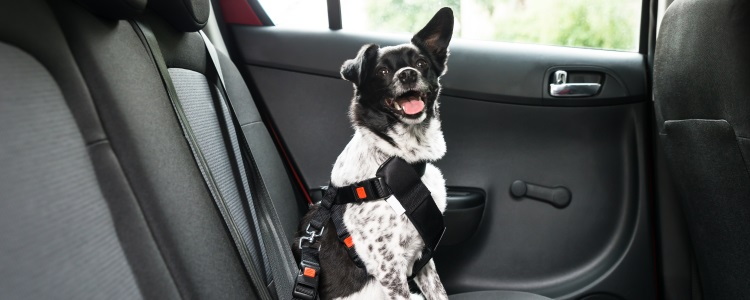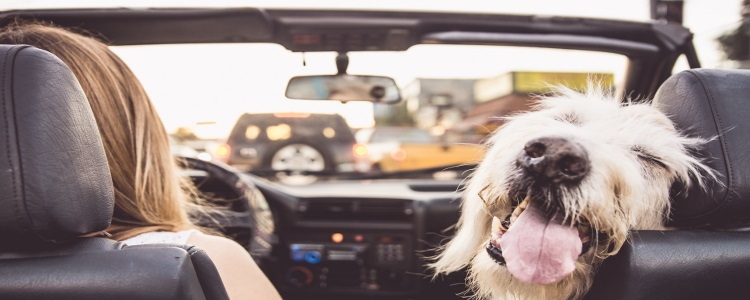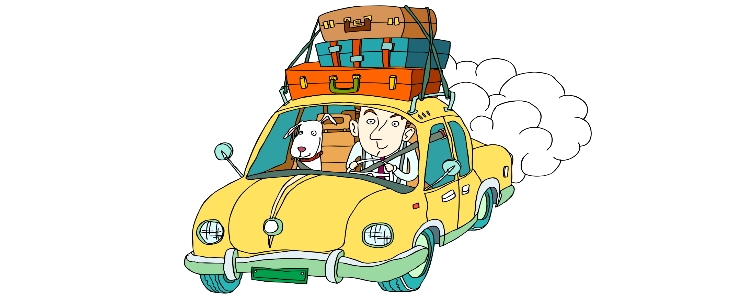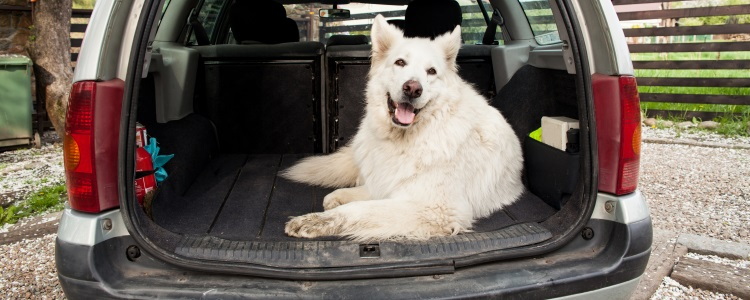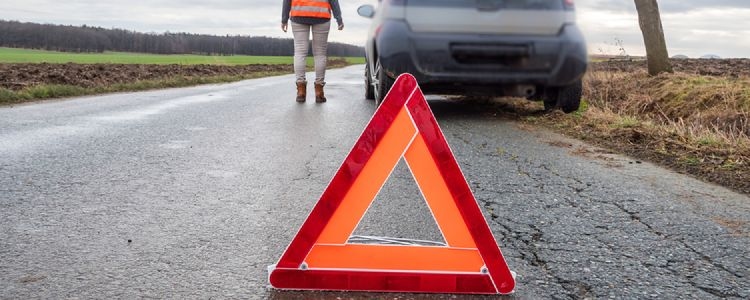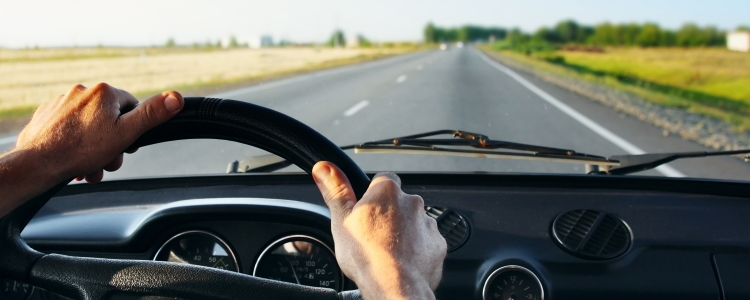Why is it Important to Ensure Dog Car Safety?
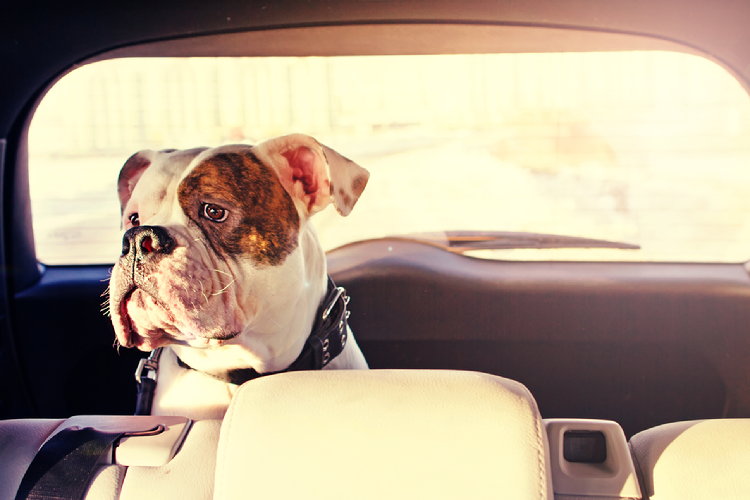
- At only 35mph, a 60-pound pet can become a 2,700-pound projectile.
- Since 2005, there has been a 300% increase in pet travel.
- Emergency workers' access to human occupants is delayed if a pet is loose.
- Unrestrained pets may escape post-accident and pose more problems.
- Rescue workers may get bitten by a scared or injured pet.
- A second accident could be caused by an escaped pet.
- Rowdy pets can become a major distraction to drivers.
How to Prepare for Traveling with Dogs in a Car?
Some vehicles are more comfortable for our four-legged friends than others. A particularly pet-friendly model to consider is a minivan with low load floors for ease of entry. This feature is especially convenient for older or bigger dogs that are more prone to hip issues. If lifting a 50-plus-pound animal is not an option, consider a loading ramp. Also, many manufacturers offer seat covers to protect against shedding and drool to help preserve Fido’s chariot.
Greatly growing in popularity are all sorts of harnesses, seats, and hammocks to help buckle in our pets. Make sure you have the right type and size for your pet by asking your vet or a pet store specialist who can give you a good idea of the best products available. We buckle up all our other loved ones, perhaps it's time for our furry friends to be buckled in now too.
Packing for Two
Your pet’s needs are similar to yours, with maybe a few additions to consider. Think about what essentials both of you need when you’re away from home, and make a list so you don’t forget anything.
- Medications
- Food
- Water
- Spillproof water bowl
- Grooming items
- Cleaning supplies
- Old towels
Losing a pet is a nightmare you never want to experience, so consider putting some safeguards in place. Microchipping is always a great idea for our pets, but especially so when traveling. Make sure your cell phone number is on their ID tags, and don’t forget to bring a picture of them in case of separation. Many states require proof of shots, so bring copies of those as well as your veterinarian’s information.
The Safest Way for Dogs to Ride in the Car
Allowing your dog to roam freely in the car can be dangerous. First off, they can cause distractions for the driver, which isn't safe for anyone. Worse, they can become dangerous projectiles in the event of an accident or sudden movement. If your pet is not restrained and you are in an accident, you may be charged with distracted driving.
Another danger, if you have a small pet, is that they could get tangled in your feet and the vehicle pedals. It is also recommended that you do not allow pets to put their head out of a window because of the danger of objects striking them, the risk of them jumping out of a moving car, or dust particles getting in their eyes.
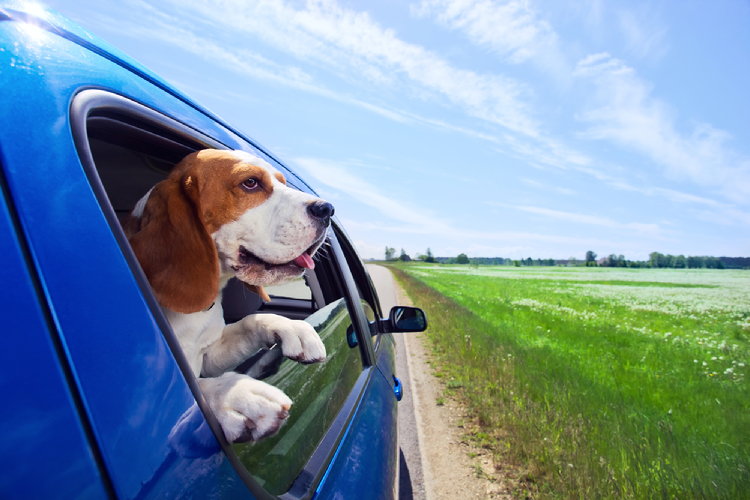
To practice dog car safety and prevent serious injuries to both pets and passengers, pets should be properly secured at all times when traveling in a vehicle. The safest way for a dog to ride in the car is secured in a crate or with a dog seat belt and harness combination. No matter the method you use, your dog shouldn't sit in the front seat under any circumstances – securing them in the cargo area or back seat behind a front seat is safer.
How to Secure a Dog Crate in the Car
Many experts agree that the crate is the safest place for your dog to sit in the car. Crates need to be anchored in the cargo area in the back of an SUV or station wagon. They should come with connections that you can secure in the cargo area anchors. However, if your pet and crate are small, they may be designed for use in the rear seat.
We would recommend that you research creates before buying. Find out if the manufacturer has put them through crash tests and if they're certified for pet travel safety. Most agree that the best materials are plastic or aluminum that's reinforced, as wire crates are prone to collapse on impact.
How to Secure a Dog in the Car with a Harness
I bet many of you are thinking that your car is too small or your dog is too big for a crate to work. In these cases, look to pet travel harnesses that utilize seat belts designed for dogs. These devices still stop them from roaming freely and are designed to keep them safe in the car.
Typically, these devices use a seat belt for dogs that anchors them in place and attaches to them using a harness. The experts agree that you should avoid using devices that attach to their collar for safety reasons. Again, these pet safety harnesses should be used in the back seat behind the front seat.
Other Dog Car Safety Pet Travel Tips
To make sure your road travels with your furry friend(s) go as smoothly as possible, these tips can help you take extra precautions:
- Practice Being in the Car – Training your pet to get used to car travel, especially from an early age, is a smart thing to do. You can help them get comfortable so they're able to stay calm. You can also get them familiarized with their travel crate or harness beforehand.
- Identification and Medical Attention – A visit to the vet for a medical checkup before a lengthy road trip might be needed. You can make sure your pet is up to date with vaccinations and healthy enough to handle the journey. Additionally, you'll want to make sure they're wearing the proper identification – name tags with a phone number and address. There are also microchips you can use to make sure your four-legged friends can be found no matter what.
- Pack Extra Supplies – You can never be too prepared when hitting the road with your pup. A pet travel kit should include their current medical records and certificate of rabies vaccination, first aid supplies, extra food and water with bowls for them, and backup leashes and collars. In the event of the unexpected, you'll be glad you came prepared.
- Mind How Long You Drive – A good rule of thumb is to stop every two to four hours for a leg stretch, a pee break, and the opportunity for water, and to try to limit your travel day to about seven hours total. Traveling with a dog in a car for a long distance can be hard on them and for human passengers; pay attention to their body language or other signals when you hit the road. Puppies will typically need to stop more frequently during car travel.
